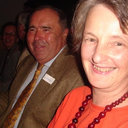Only some patients with bulbar and spinal muscular atrophy may develop cardiac disease.
کلید واژه ها
خلاصه
UNASSIGNED
According to recent publications, some patients with spinal and bulbar muscular atrophy (BSMA) develop cardiac disease, manifesting as ST-segment abnormalities, Brugada-syndrome, dilative cardiomyopathy, or sudden cardiac death. Here we present neurological and cardiac data of a BSMA patient who was followed up for 10 y.
UNASSIGNED
In a male patient aged 47 y, BSMA was diagnosed at age 37 y upon the typical clinical presentation (postural tremor since age 12 y, dysarthria since age 15 y, muscle cramps since age 29 y, general myalgias since age 32 y, general fasciculations since age 34 y, myoclonic jerks, easy fatigability, dyspnea upon exercise since age 36 y) and a CAG-repeat expansion of 47 ± 1 repeats in the androgen-receptor gene detected at age 37 y. During the next 10 y he additionally developed mild but slowly progressive diffuse weakness on the upper limbs and mild proximal weakness on the lower limbs. Cardiologic exam, ECG, and echocardiography were normal at ages 37 y, 41 y, 44 y, and 47 y.
UNASSIGNED
Cardiac involvement may only develop in some BSMA patients within 10 y, whereas neurologic abnormalities slowly progress within 10 y of observation. Cardiac disease may develop at a later stage with progression of age and disease.


